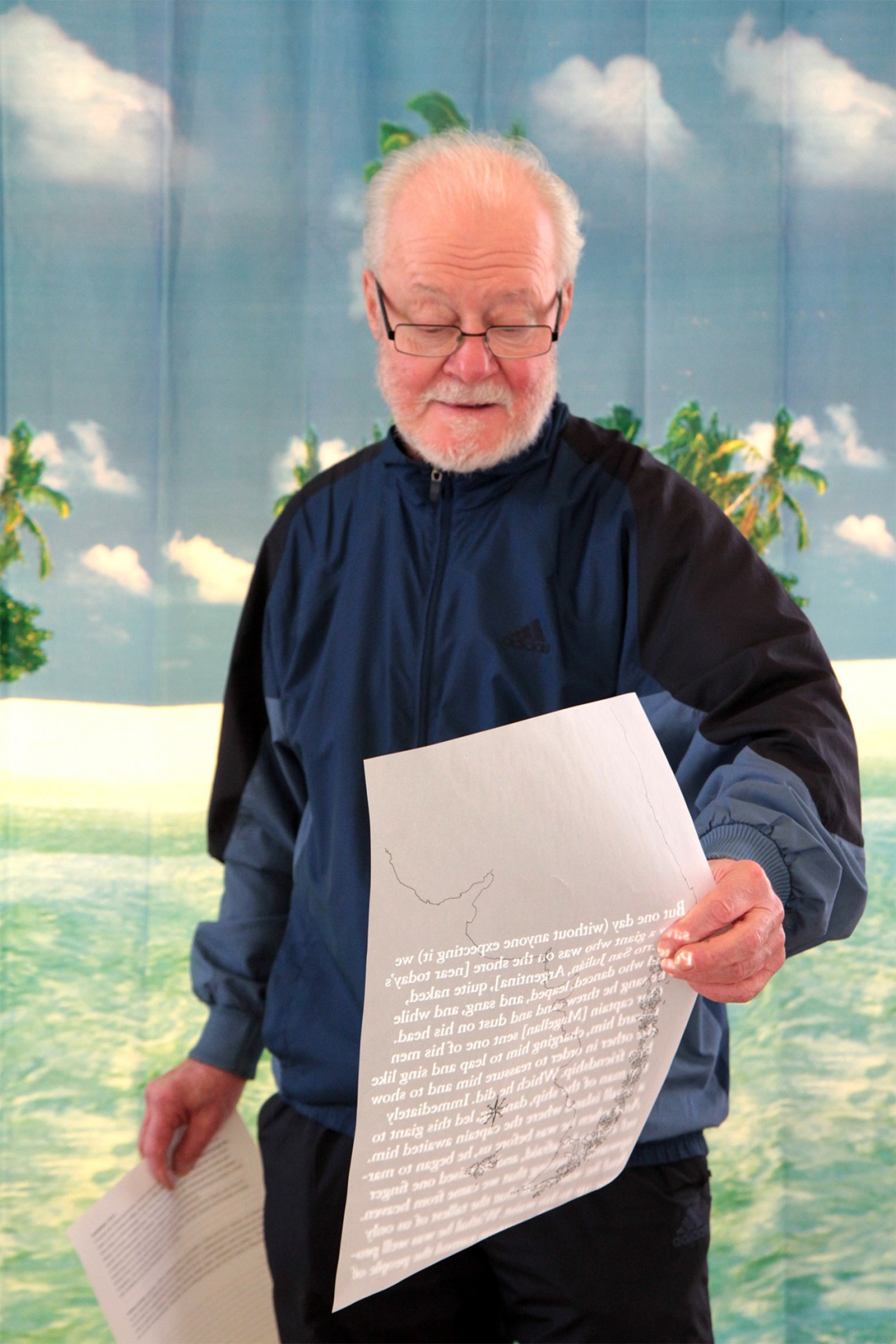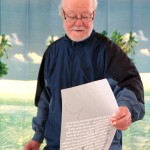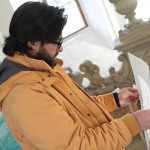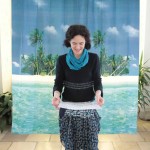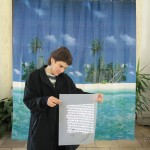The Giant, the Draughtsman and a Beautiful Landscape
The central motive of the work is a myth that originated in the sixteenth century during Ferdinand Magellan’s voyage to find a westward sea path to the “Spice Islands” (the Indonesian archipelago of the Maluku Islands). Chronicled by journal-keeper Antonio Pigafetta, an account of a population of giants living in Patagonia found its way back to Europe which persisted for the next two and a half centuries.
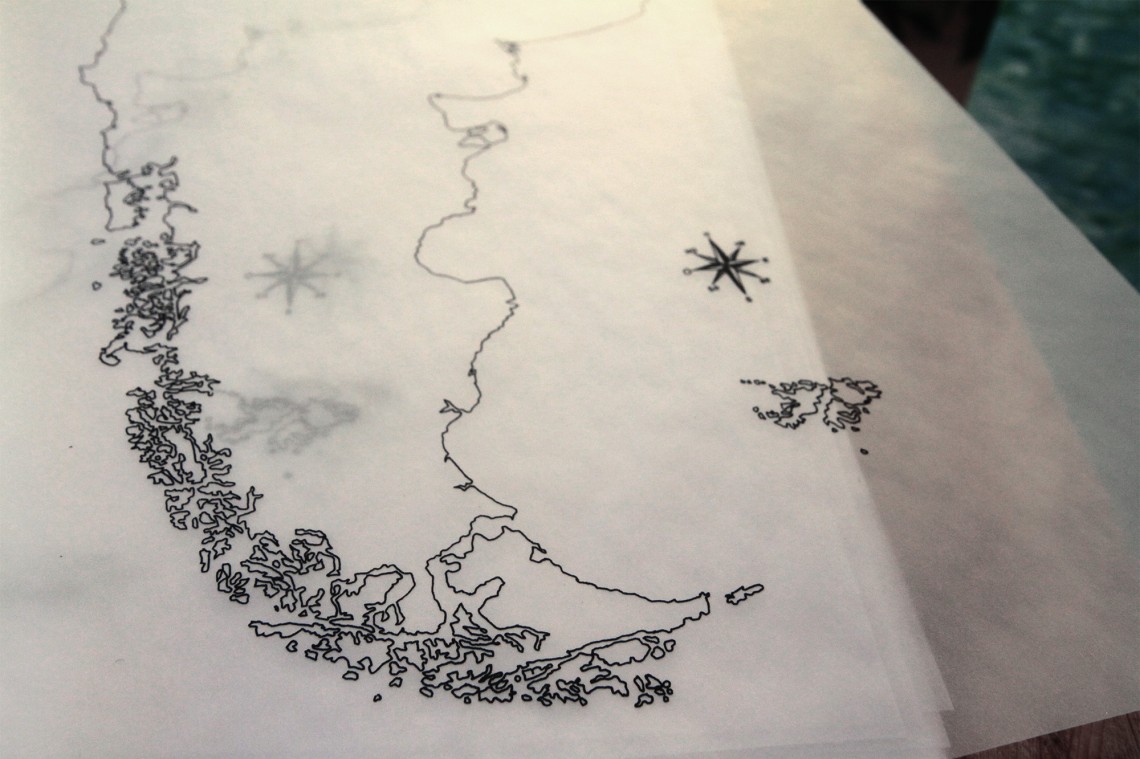
The work wants to highlight the importance of myths in building narratives and producing knowledge. The myth is investigated from a multitude of perspectives covering anthropology, ethnography, geography and history. In this way, the work also represents an attempt to overcome disciplinary boundaries and also ask where they stand. It was first presented in the Volkskunde Museum in Vienna, or the Ethnographic Museum, where the process of contextualizing the work within the museum created a profound impact on the outcome of the work.
When we talk about the perception of a culture as that of the other, in this case the Tehuelche native people who were encountered on Magellan’s journey, it brings a multitude of implications and problems, including the process of ‘othering’ which is seen through the metaphor of the giants.
The giants also serve as a metaphor to highlight the notion of the human size and scale in proportion with the world they inhabit. Emotional distance together with physical distance can be seen through the use of ‘exotic’ references such as a huge, slightly bizarre, image of a duplicated tropical island on a purchased shower curtain, insinuating that longing is something that is present in everyday life, like taking a shower. The central concepts of the work, in the end jointly represent the artist’s personal contemplation and deconstruction of the concepts and feelings regarding home, displacement, longing, nostalgia and desire.
I CENTRAL PIECE
The main piece consists of a dia projection of a text excerpt taken from Antonio Pigafetta’s 1525 journal “Magellan’s Journey: A Narrative Account of the First Circumnavigation”, where the first encounter with the so-called ‘Patagon giants’ is described. The exhibition visitor is invited to take a sheet of transparent paper with a printed map drawing (representing the outline of South America) and walk in front of the projection. The sheet is placed in front of it and the visitor searches for the place where the text can be focused and readable.
In this way, the story of the myth is only present when the visitor ‘evokes’ it alluding to the ephemerality of a myth, which only exists when the necessary ‘carrier’ is present. The map has two significant aspects. On one hand, it is a map, whose first function is to help navigate and guide the user through unknown territories. On the other hand, when it is used in the function of searching for the focused text projection, it becomes a technological device with which it is possible for us to learn about the myth. During the process, the visitor enters the projection field turning their back to the image of a stereotypical ‘paradise’ island, or symbolically, turning their back to paradise while in search of knowledge. In this way, the visitor enters a space of longing, usually struck by highly aestheticized images of distant, exotic islands.
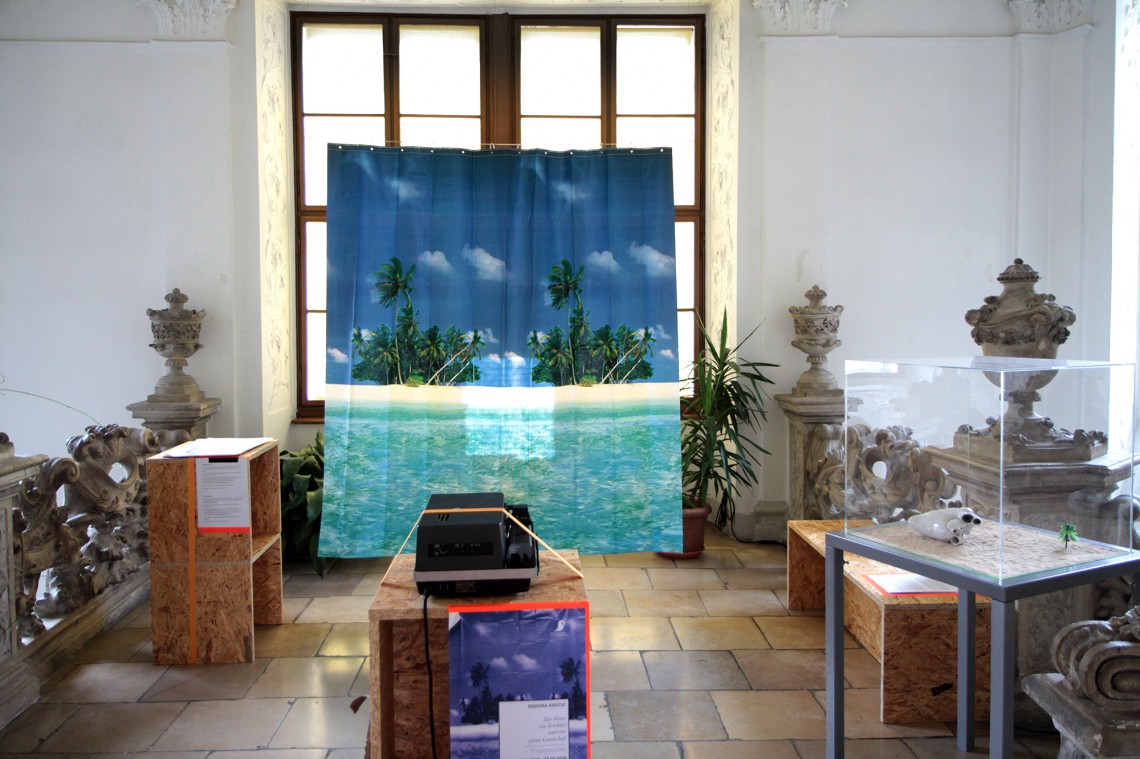
TECHNICAL INFORMATION
Dia projector, dia-positive slide (featuring the quotation), PVC shower curtain suspended on nylon string, 100 pieces of map prints (the original drawing of the outline of the South-American continent was scanned and printed on transparent paper, author: Isidora Krstić)
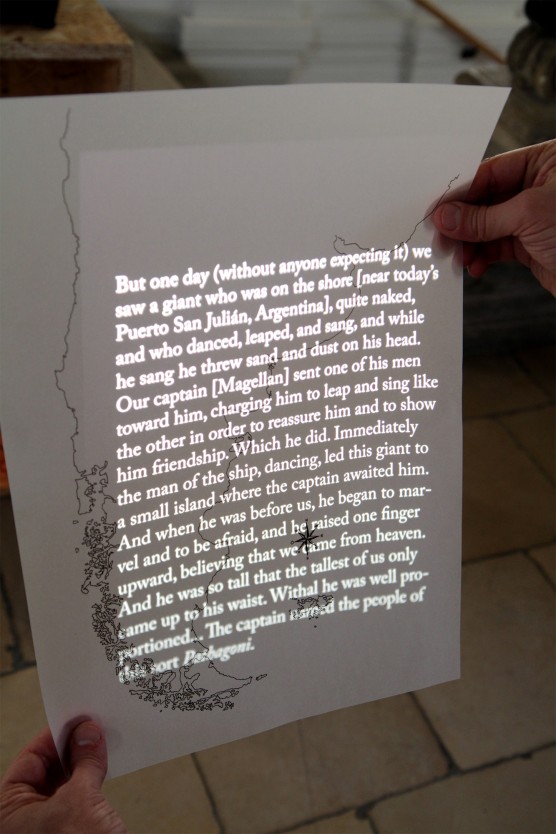
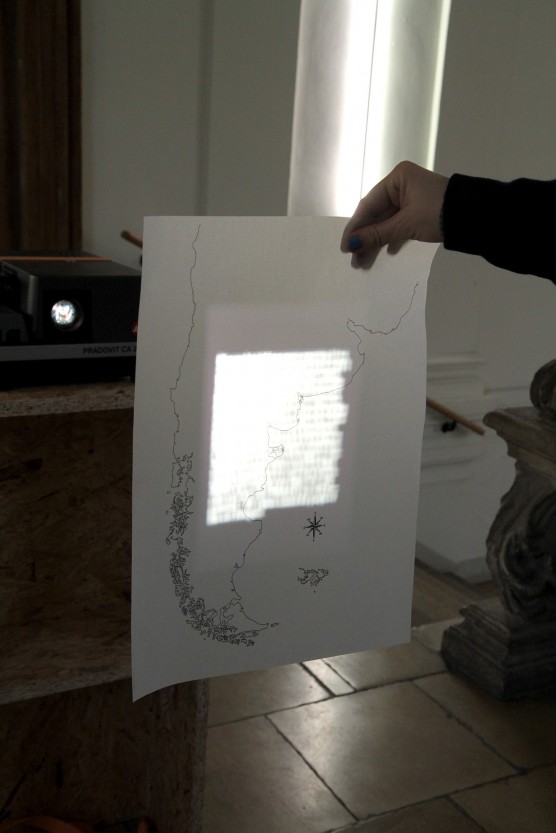
II GLASS SHOWCASE
The side piece represents a miniature scenographic setting of a beach. What is immediately noticable is the disproportional scale of the elements. A strange ‘exotic’ landscape, where things are not quite right. The gigantic heart represents a symbolic gesture of the artist to give the ‘Patagon giants’ their heart back, as it was in a way taken away from them in the process of the objectification of their bodies with the myth. The porcellain material as well as the glass showcase evoke an almost sacral aspect of the sculpted object’s role – which gives emotions symbolized by the heart, a sacred property.
TECHNICAL INFORMATION
Sculpted porcellain and glazed heart (author Isidora Krstić), plastic purchased toy palm, 1kg of sand for chinchillas, glass showcase.
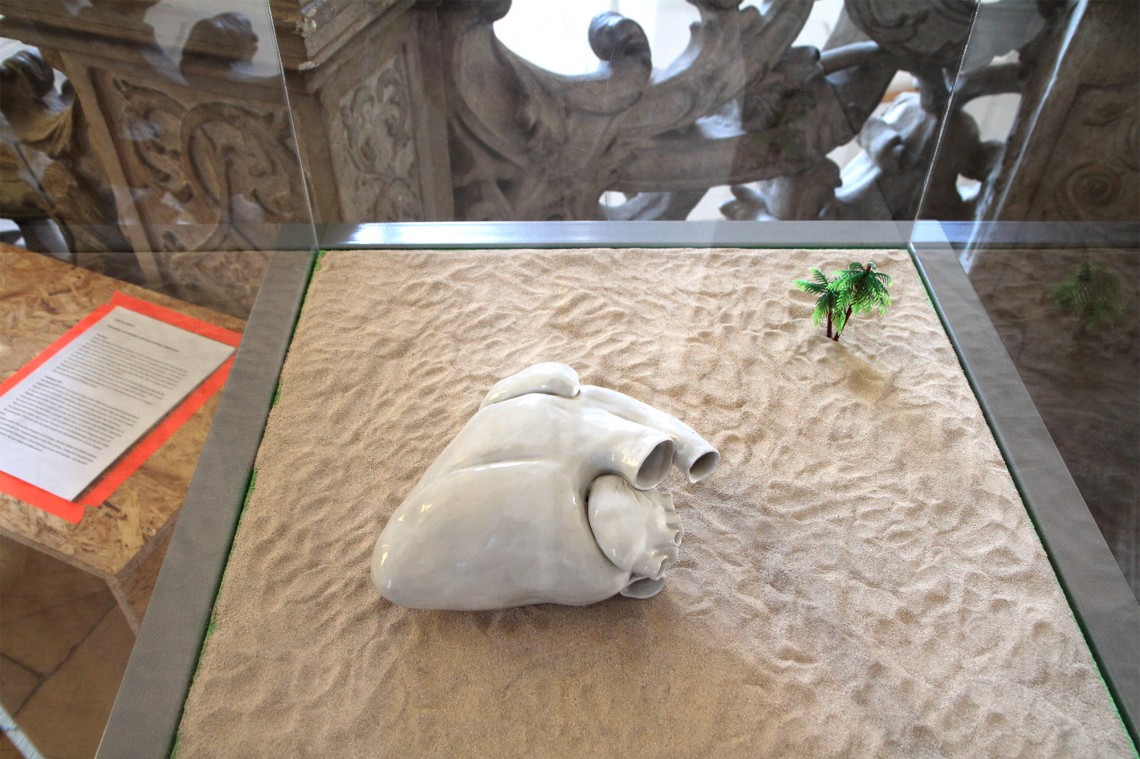
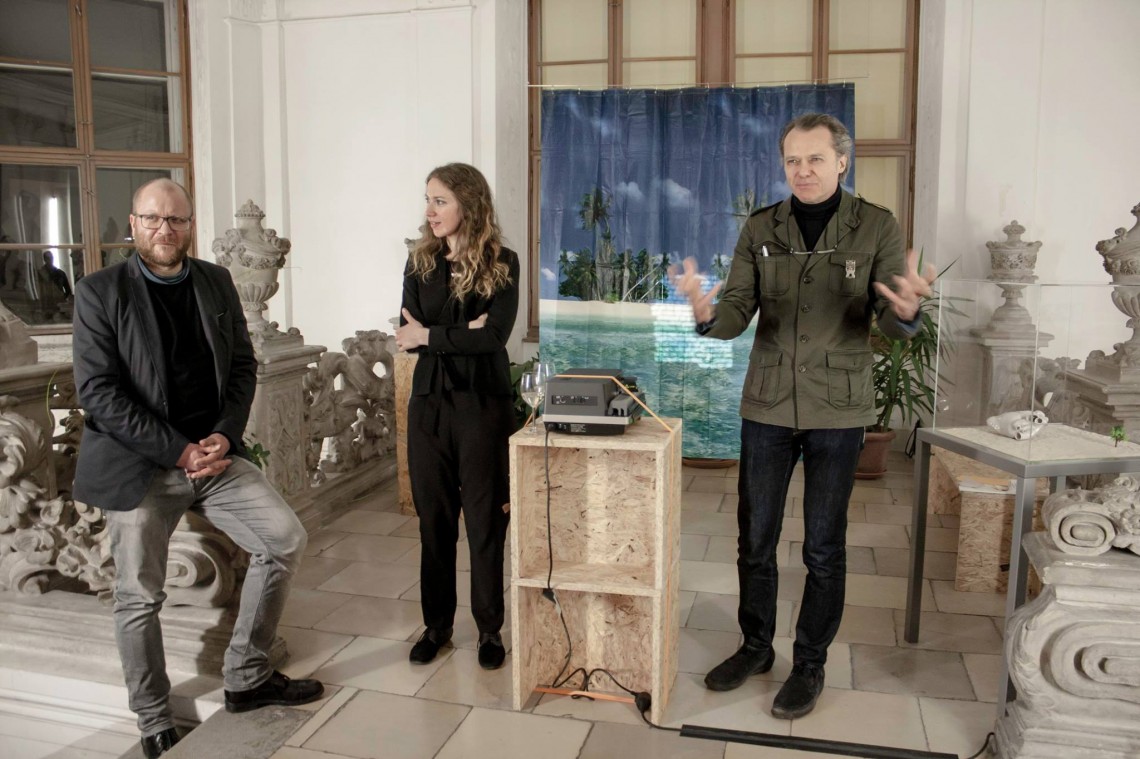
Herbert Justnik, Isidora Krstic and Bernd Kräftner at the exhibition opening of "The Giant, the Draughtsman and a Beautiful Landscape", Volkskunde Museum Vienna, 18 January 2016, photo: Zuzana Melichar
The work represents Isidora Krstic’s Master thesis project work in Art and Science at the University of Applied Arts in Vienna.
The work was mentored by Virgil Widrich and Bernd Kräftner with the kind support of the Volkskunde Museum in Vienna, director Matthias Beitl and curator Herbert Justnik.
Images: (c) Isidora Krstić (Volkskunde Museum Vienna, 18-31 January 2016)
